Historic landscapes for warmer weather
With Spring’s arrival this week, many Chicagoans bolt outdoors to enjoy the rising temperatures after a long winter. Chicagons seeking an unusual outdoor space to enjoy nature and the blessings of Spring should look to the garden grotto, found on the grounds of a number of Catholic parishes and institutions. The grotto, a symbolic religious structure within a landscape, is an American 20th-century vernacular form built into a garden landscape with rocks and concrete. Typically found in gardens adjacent to churches or other religious buildings, grottoes are often used as outdoor chapels or as a place of perpetual adoration. Grottoes are derivative of the natural cave, often associated with the dwelling place of divinities, and crafted into a cave-like form.
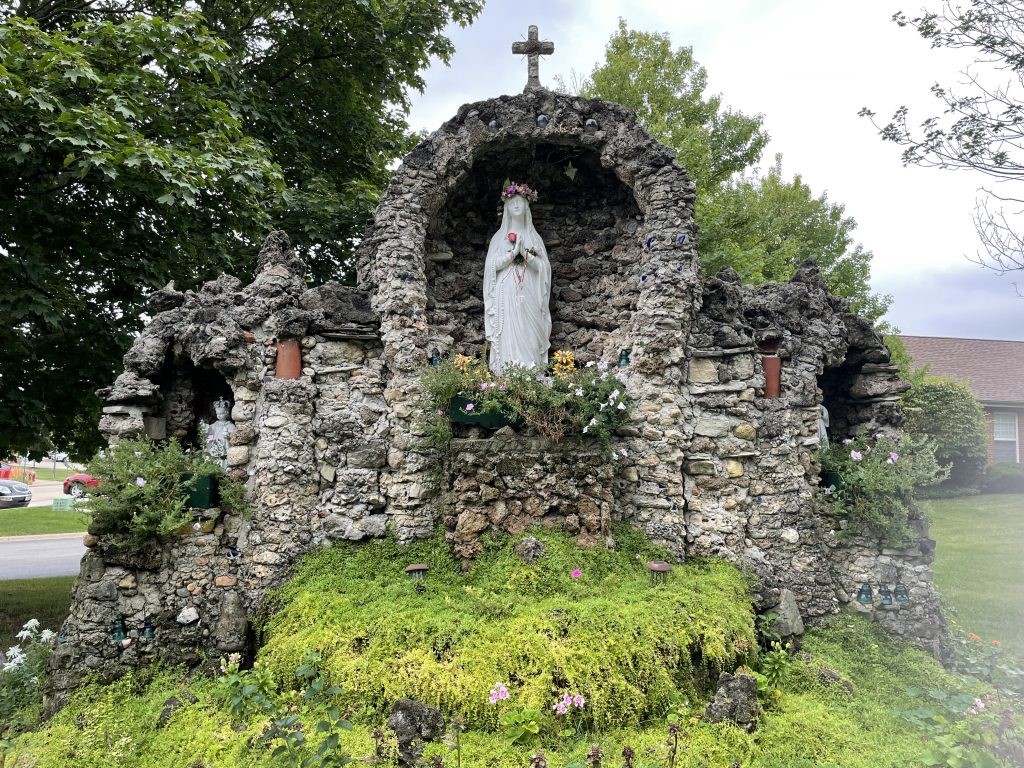
Twentieth-century American grottoes can be large or small, but usually fall into three categories: a folk art grotto, with an assemblage of glass, ceramic pieces, gem stones, and concrete; a garden grotto with naturalistic materials, setting, and design; or a statuary grotto with focus on a single statue or sacred object placed within an architecturally-designed surround or a background structure.
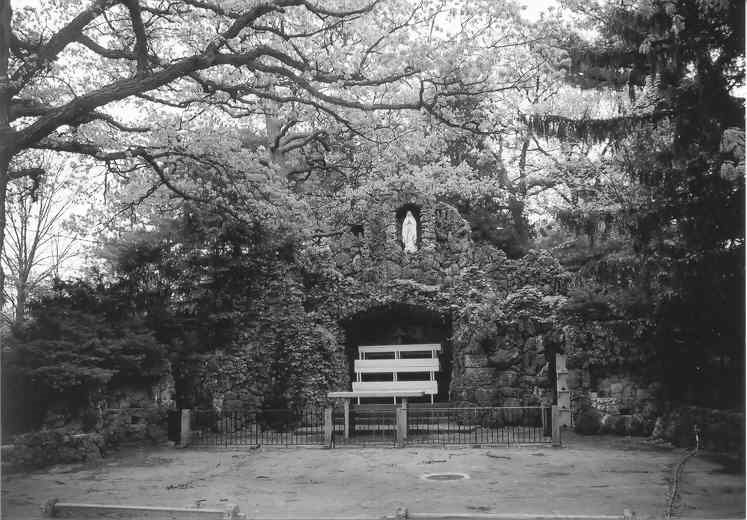
Grottoes are the most common large scale prayer garden in the Chicago area, with at least 25 known to exist. Members of the Catholic clergy commissioned or even built their own grottoes on their properties in honor of an important event, anniversary, or person. In one of the best known studies of grottoes, Sacred Spaces and Other Places, Lisa Stone and Jim Zanzi identify the 20th-century Midwestern grotto as based in European garden shrine and grotto tradition, and noted they were constructed often by immigrant Catholic clergy. Catholics often erected grottoes as an outdoor shrine to favorite saints, or in honor of the Blessed Virgin Mary. Builders placed stone statues within carved out niches or on top of the grotto, reflecting the religious figure honored in the garden shrine. Marian grottoes are the most common, with a great number inspired by the well-known grotto at Lourdes, France where St. Bernadette Soubirous experienced apparitions of the Virgin Mary.
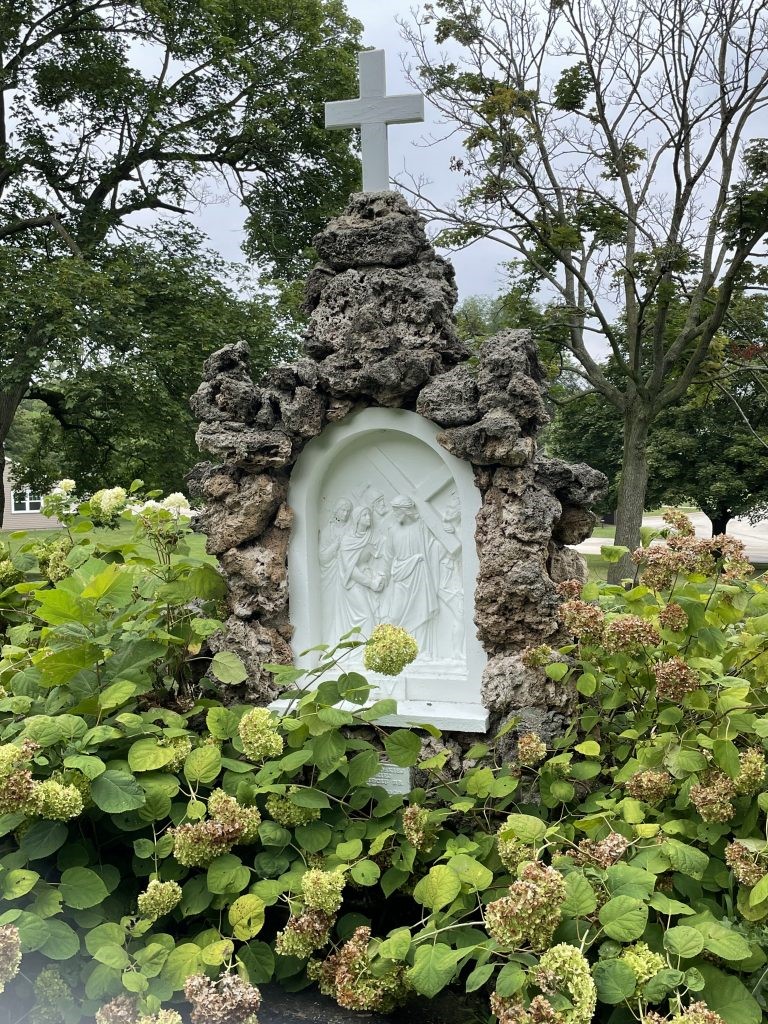
Within a planned sacred landscape, the grotto often serves the principal focal point or destination. Planned circulation paths often are axial and approach from the front, or are curvilinear paths that wind around from the side. Since grottoes are typically found on the grounds owned by a religious institution, it is not surprising that the grotto can be part of group of sacred shrines for worship, such as the Stations of the Cross, linked by paths for its pilgrimaging visitors. The grotto inspires reverence and peacefulness to its visitors, offering a quiet, sacred space for reflection and meditation.
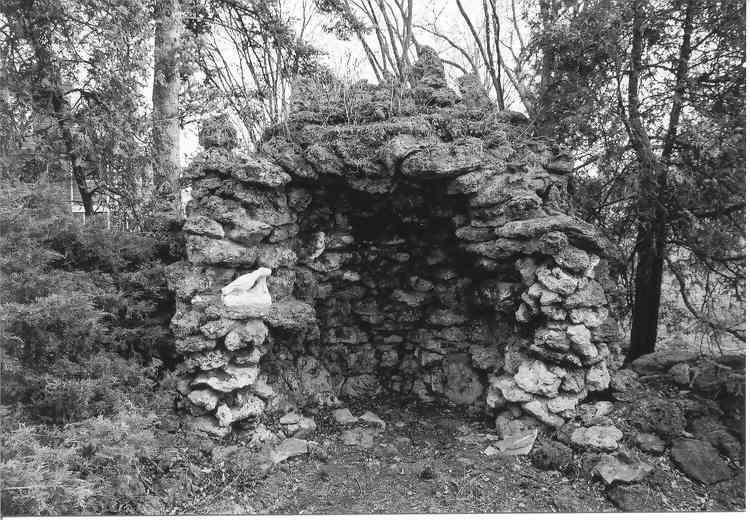
Over 10 years ago, I researched and wrote about a grotto landscape (now demolished). The New World (now Chicago Catholic) offered a publication piece to help locate grottoes in Chicago and its suburbs. The following is an evolving list of known grottoes, extant or not extant, in the Chicago area. Please note that these grottoes, if extant, are located on private property and permission may be necessary to visit. If you know the status of any of these grottoes, please contact me via this site.
- Academy of Our Lady, School Sisters of Notre Dame/Chicago Public Schools Charter School, Chicago, Lourdes garden, 1908
- St. Isadore the Farmer Parish, Blue Island, Lourdes garden, 1946
- St. John the Baptist Church, Harvey, Lourdes garden, 1927
- Our Mother of Sorrows Provincial House, Sisters, Servants of Mary (Mantellate Sisters), Blue Island, 1926
- St. Joseph Parish, Summit, Lourdes garden, 1934
- St. Mary Catholic Cemetery, Evergreen Park, Lourdes garden
- Bethlehem Woods Retirement Community, Sisters of St. Joseph of LaGrange, LaGrange Park, Lourdes garden, 1926
- Dominican University, Dominican Sisters, Congregation of the Most Holy Rosary (Sinsinawa Dominicans), River Forest, Lourdes garden, c. 1923
- Felician Sisters Provincial House, Congregation of the Sisters of St.Felix of Cantalice (Felician Sisters), Chicago, Lourdes garden, 1921-1927
- Felician Sisters Provincial House, Congregation of the Sisters of St.Felix of Cantalice (Felician Sisters), Chicago, Stations/Cross, garden, 1921-1927
- Felician Sisters Provincial House, Congregation of the Sisters of St.Felix of Cantalice (Felician Sisters), Chicago, Fatima, 1921-1927
- Maria Immaculata Convent (Mallinckrodt), Sisters of Christian Charity/Wilmette Park District, Wilmette, Lourdes garden, 1916
- St. Scholastica Priory, Benedictine Sisters of Chicago, Chicago, Chapel, 1906
- Mount Assisi Convent, Congregation of the Franciscan Sisters of Chicago, Lemont, Stations/Cross, 1926
- Mount Assisi Convent, Congregation of the Franciscan Sisters of Chicago, Lemont, St. Francis
- Holy Ghost Academy, Missionary Sisters, Servants of the Holy Spirit, Techny, Lourdes garden, 1914
- Provincial House, Sisters of the Holy Family of Nazareth, Des Plaines
- Our Lady of Victory Convent, Congregation of the Franciscan Sisters of Chicago, Lemont, 1963
- Resurrection Retirement Home, Sisters of the Resurrection, Chicago, Lourdes garden,
- Lourdes High School, Sisters of St. Joseph of the 3rd Order of St. Francis, Chicago
- St. Casimir Convent, Sisters of St. Casimir, Chicago, 1909
- Daughters of St. Mary of Providence, Chicago, Lourdes garden.
- Seven Dolors Shrine, Franciscan Fathers of the Most Holy Saviour Commissariat, Valparaiso, IN, Lourdes garden.
- Seven Dolors Shrine, Franciscan Fathers of the Most Holy Saviour Commissariat, Valparaiso, IN, Stations/Cross, garden.
- Seven Dolors Shrine, Franciscan Fathers of the Most Holy Saviour Commissariat, Valparaiso, IN, St. Francis
- Seven Dolors Shrine, Franciscan Fathers of the Most Holy Saviour Commissariat, Valparaiso, IN, Sorrowful Mother
- Villa St. Benedict, Benedictan Sisters of the Sacred Heart, Lisle, Lourdes garden,
- Sacred Heart Seminary, Kane County Government Center, Geneva, Altar
- St. Raphael Parish, Sisters of Christian Charity (closed), Chicago, Lourdes garden,
- Guardian Angel Home, Joliet
- University of St. Francis, Franciscans of Joliet (to be senior housing), Joliet.
- St. Cecelia Convent, Chicago, Lourdes garden
- St. Mary of the Lake Seminary, Mundelein, Lourdes garden
- St. Mary of the Lake Seminary, Mundelein, Stations/Cross garden
- Our Lady of Lourdes Church, Chicago, Lourdes garden, 1940s
- Holy Angels Church, Aurora
- Annunciation Church, Aurora, Lourdes garden
- Carmelite Motherhouse, Darien
- National Shrine of St. Jude, Claretian Missionaries, Chicago, 1929
- Maximillian Kolbe Shrine, Libertyville
- Holy Cross Hospital, Chicago
- Provincial House, Society of the Divine Word, Techny
- Slovenian Catholic Mission, Lemont, Rosary Valley, Franciscan Rosary, 1950s
- Slovenian Catholic Mission, Lemont, Lourdes garden, 1930s
- Slovenian Catholic Mission, Lemont, Stations/Cross garden, 1950s
- St. James of the Sag Cemetery, Lemont
- Notre Dame de Chicago Church, Chicago (lower church?)
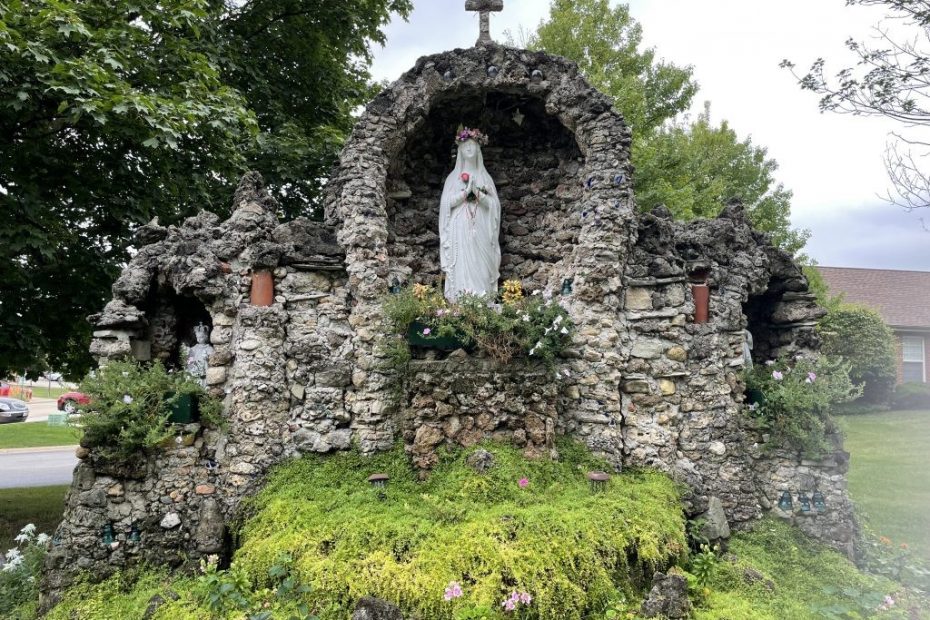
Hello, Jennifer: Thank you for crafting this article. Long story short, my family is in search of the Lourdes Garden grotto at Bethlehem Woods, near Nazareth Academy. Did you ever receive any responses to your article last year that might shed any light on whether this particular grotto still exists?
From a 2010 Trib article:
https://www.chicagotribune.com/news/ct-xpm-2010-03-12-ct-x-w-0312-wht-st-joseph-20100312-story.html
“The Bethlehem girls school, which had been unused for several years, was torn down about 20 years ago to make way for Bethlehem Center, a senior citizen complex. Most of an outdoor walk that followed the path of the 14 Stations of the Cross was dismantled, leaving only station 12, the crucifixion, and a grotto that once was the center of much religious activity.
The grotto, based on the concept of Lourdes, the French town where a young girl reported speaking to the Virgin Mary, is fenced off behind the senior center for visitors’ protection. Back in its glory days, students from St. Joseph Academy and Bethlehem would parade to the grotto during May Fair to see an honored girl present a crown of flowers to an honored boy who would climb the rocky wall and place it upon the Virgin’s head.”
Thank you kindly for sharing any additional info you may have on the history of this grotto.
Gratefully,
KM
Hi KM,
The Lourdes grotto at Nazareth Academy is extant. I actually toured their assisted living facility in 2021, and took pictures of the grotto. I can’t seem to get my hands on the photos at this moment to share. I’ll take a look to see what I have.
Thanks for visiting my little blog.
Jennifer